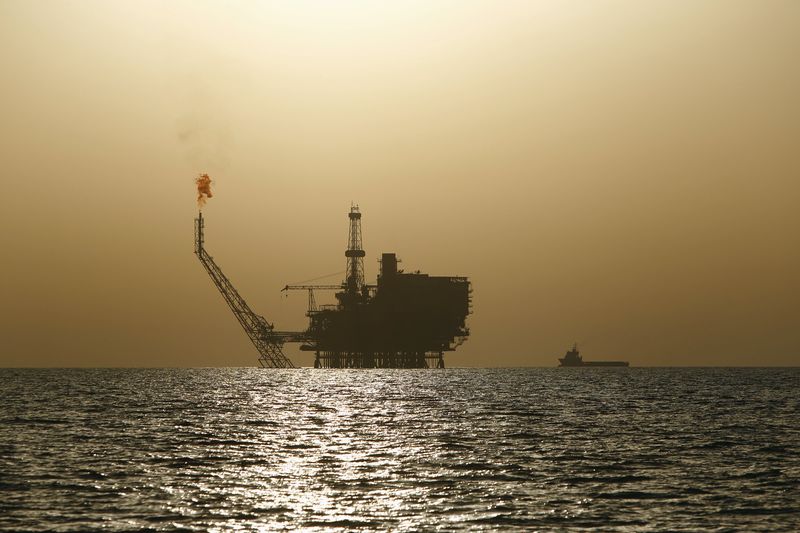[ad_1]
© Reuters. FILE PHOTO: Crude oil storage tanks are seen from above at the Cushing oil hub, in Cushing, Oklahoma, March 24, 2016. REUTERS/Nick Oxford/File Photo
By Alex Lawler
LONDON (Reuters) – Oil prices rose on Friday in choppy trade as hopes of stronger Chinese demand and output cuts by OPEC and its allies offset concern about a global economic downturn and the impact of interest rate rises on fuel use.
To fight inflation, the U.S. Federal Reserve is trying to slow the economy and will keep raising its short-term rate target, Federal Reserve Bank of Philadelphia President Patrick Harker said on Thursday in comments that weighed on oil.
But crude is gaining support from a looming European Union ban on Russian oil, as well as the recent 2 million barrels-per-day output cut agreed by the Organization of the Petroleum Exporting Countries and allies including Russia, known as OPEC+.
was up $1.00, or 1.1%, at $93.38 a barrel by 1400 GMT. U.S. West Texas Intermediate crude gained $1.14, or 1.4%, to $85.65.
“It continues to look like oil is establishing a new range after a host of factors caused massive swings in the price, including the increasingly pessimistic global economic outlook and the huge 2 million cut to output from OPEC+,” said Craig Erlam, analyst at OANDA.
Brent, which came close to its all-time high of $147 a barrel in March, was on track for a weekly gain of almost 2%, while was steady. Both benchmarks dropped in the previous week.
Regarding the OPEC+ cut, which was criticized by the United States, Saudi Arabia’s energy minister on Friday said the producer group was doing the right job to ensure stable and sustainable oil markets.
Oil gained a lift on Thursday after Bloomberg News reported that Beijing was considering cutting the quarantine period for visitors to seven days from 10 days. There has been no official confirmation from Beijing.
“The knee-jerk price action provided a useful glimpse of what to expect once more punitive restrictions are lifted,” said Stephen Brennock of oil broker PVM, of the market’s rally after the report.
China, the world’s largest crude importer, has stuck to strict COVID-19 curbs this year, weighing heavily on business and economic activity and reducing demand for fuel.
[ad_2]
Image and article originally from www.investing.com. Read the original article here.

